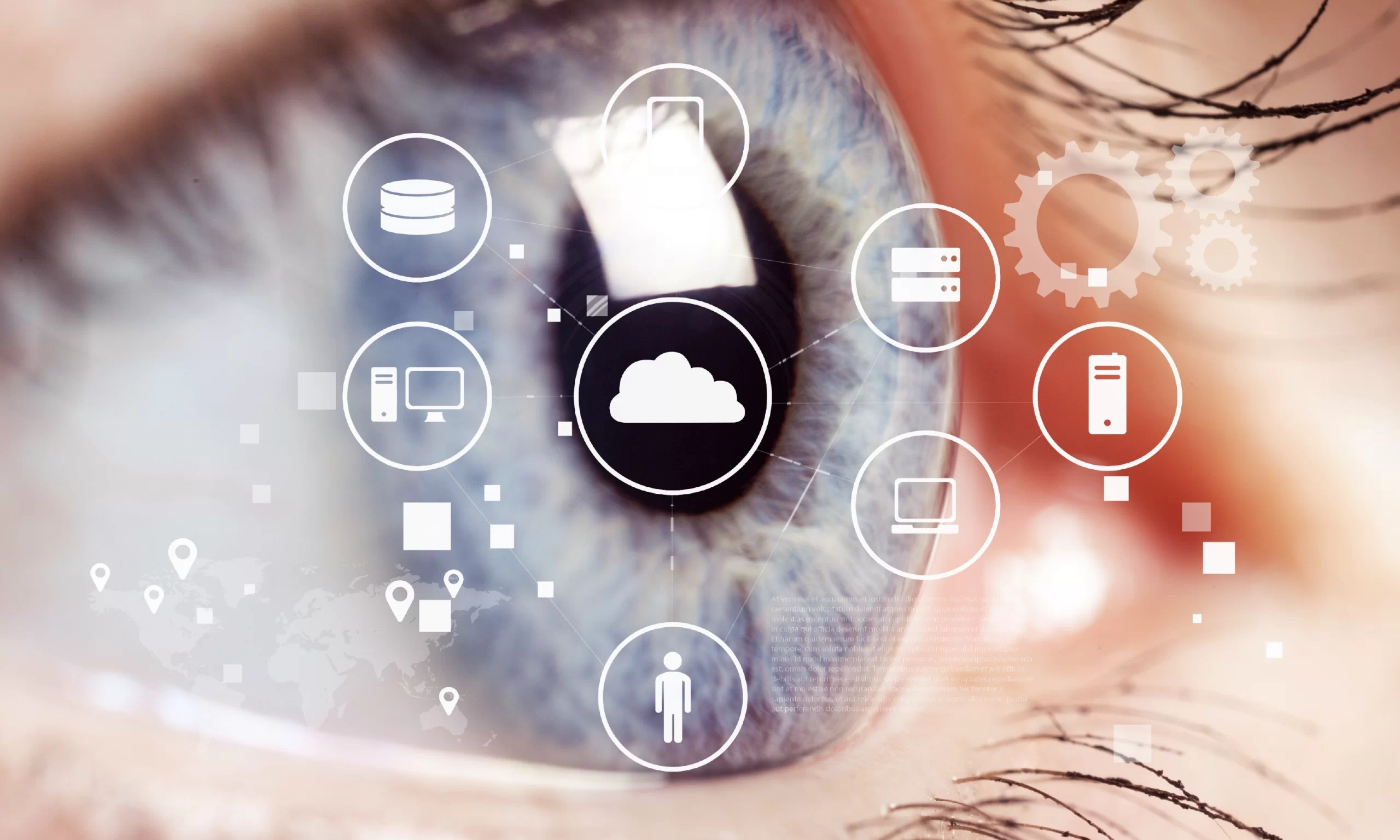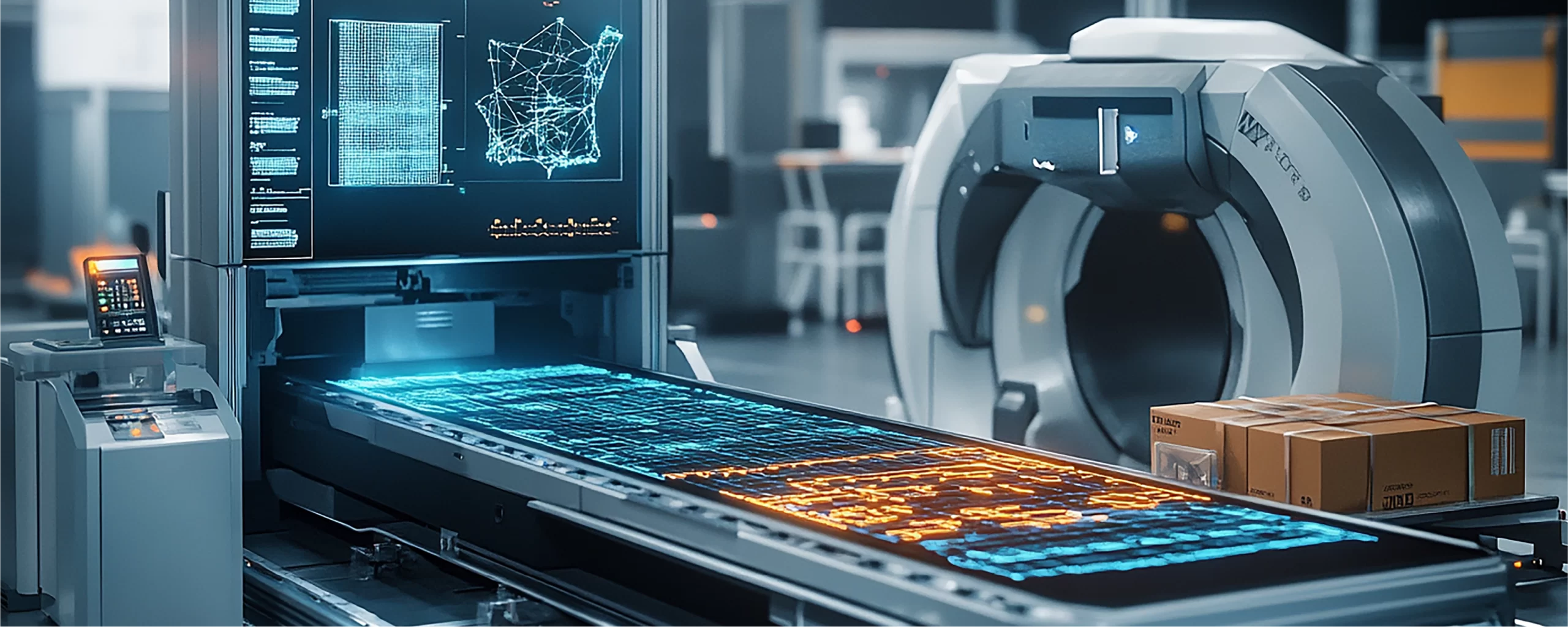Net-Zero Hospitals – Role of DigiTech in Sustainable Healthcare
With the inevitable reality of climate impacts, the demand to create energy-efficient, maintainable healthcare facilities has never been more fundamental. Net-zero hospitals have a shared duty with healthcare suppliers, development experts, and administrative bodies. By tolerating smart innovation, moving towards sustainable design, and executing vigorous operational frameworks, we will build the cleanest, foremost, and strongest healthcare framework that the future requires.
What are Net-Zero Hospitals?
Net-zero hospitals are intended to have zero net carbon emissions by lowering energy use, shifting to renewable power sources, and limiting their environmental footprint. They prioritize sustainability without compromising on high-quality patient care and operational efficiency.
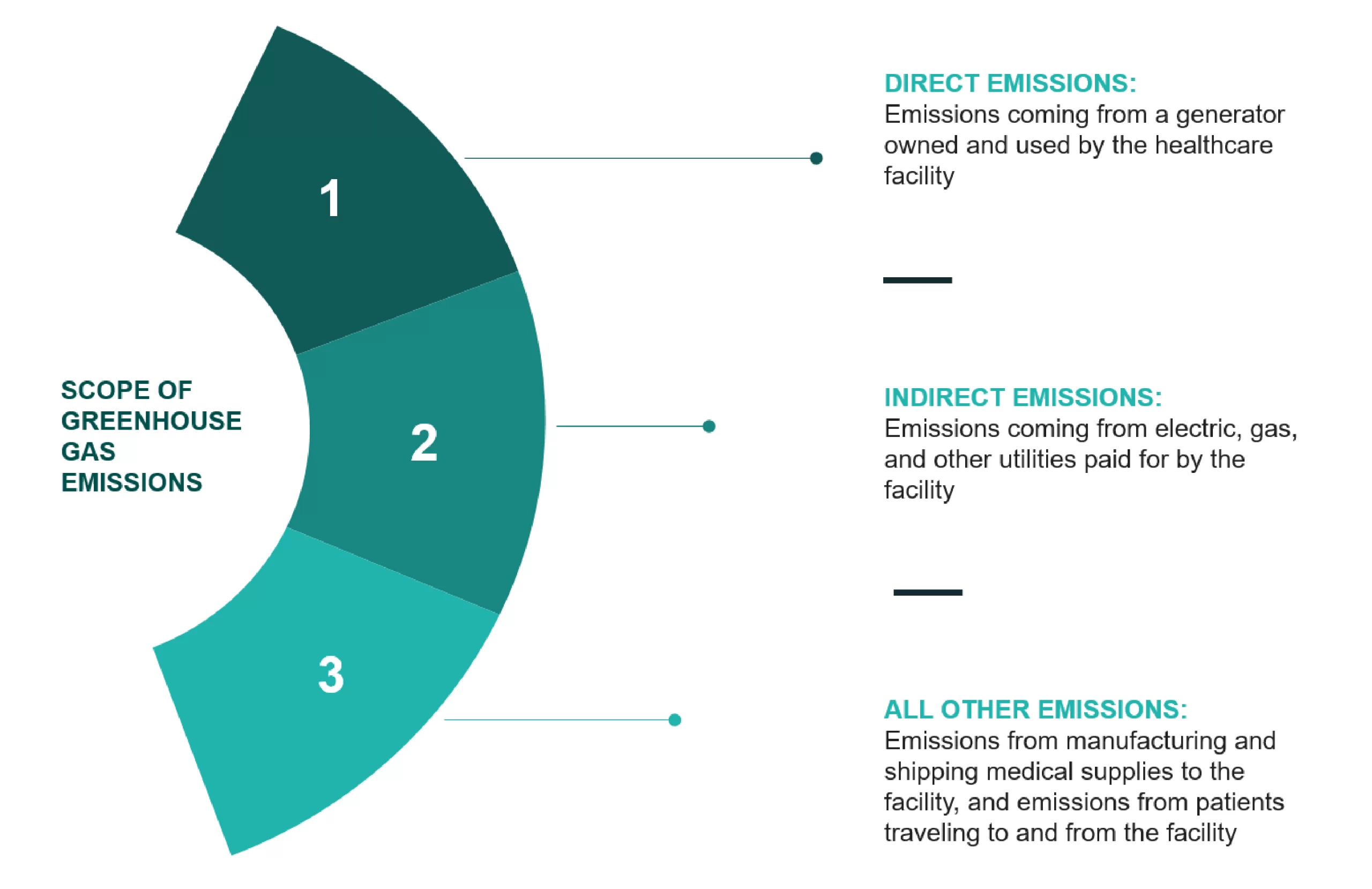
Figure 1: Scope of Greenhouse Gas Emissions in Healthcare
What Does a Net-Zero Healthcare Facility Look Like?
| Clean Energy Transition | Shift to renewable energy sources and integrated low-carbon grids |
| Efficient Energy Use | Use of energy-efficient systems such as LED lighting |
| Battery Power | Utilizing battery storage systems harnessing energy from renewable sources |
| Efficient Water Use | Automatic shut-off taps, efficient wastewater management |
| Warning Systems | Using heat and air quality index alert systems for real-time notifications |
| Low Carbon Prescribing | Suppliers provide low-carbon products, packaging, and logistics |
| Distributed Healthcare | Multidisciplinary consultations to reduce patient travel |
| Medical Device Reprocessing | Established medical device reprocessing programs |
| Primary Health Shift | Transition from hospital-centric care models to community-based early intervention |
| Electric Vehicle Fleet | The rise of electric vehicles and enhanced supporting infrastructure of charging stations |
| Active Transport | Encourage safe cycling and pedestrian infrastructure |
| Telehealth | Using video conferencing and telehealth services reduces physical travel, cuts emission |
| Advance Healthy Eating | Healthy, plant-based diet, using reusable containers, minimizing waste |
Need for Net-Zero Hospitals
It has become increasingly important to build and operate net-zero hospitals, which not only reduce healthcare’s ecological footprint but also ensure sustainable, resilient, and efficient healthcare systems.
- Large Carbon Footprint of HealthCare
- All over the world, the health sector contributes about 4-5 percent to carbon emissions. Hospitals are especially heavy energy utilizers because of medical outfits, including heating, cooling, and ventilation systems running 24/7.
- There exists an emission reduction aim that’s in line with global climate objectives, such as the Paris Agreement
- Climate Change’s Health Impact
- The heat, pollution in the air, and uncontrolled weather escalate the load of respiratory ailments, heat strokes, and vector-borne diseases
- Hospitals need to become role models in reducing carbon footprints to minimize their overall effect on the environment while equipping themselves against climatic challenges affecting health
- Energy & Costs
- Intelligent infrastructures and intelligent buildings, combined with the conversion of energy using renewables, bring the prospect of plummeting long-term operation costs dramatically
- Reduced energy use while providing the same quality care makes hospitals less vulnerable to outages and power loss
- Sustainable Procurement & Waste Management
- Much medical waste, as well as remaining medicines and plastic waste, is generated by hospitals
- Net-zero policies support the use of more environmentally friendly raw materials, adopt sustainable circular economy models and support recycling
- Regulatory & ESG Compliance
- Government agencies and international associations are assessing rigorous net-zero pretensions on health institutions
- Health institutions taking on net-zero objectives align with environmental, social, and governance (ESG) conditions
- Healthier Environments for Patients & Staff
- Natural ventilation, non-toxic materials, and renewable energy sources in green hospital designs enhance indoor air quality, patient recovery rates, and staff well-being
A few benefits of Net-Zero Emissions in healthcare are mentioned below:
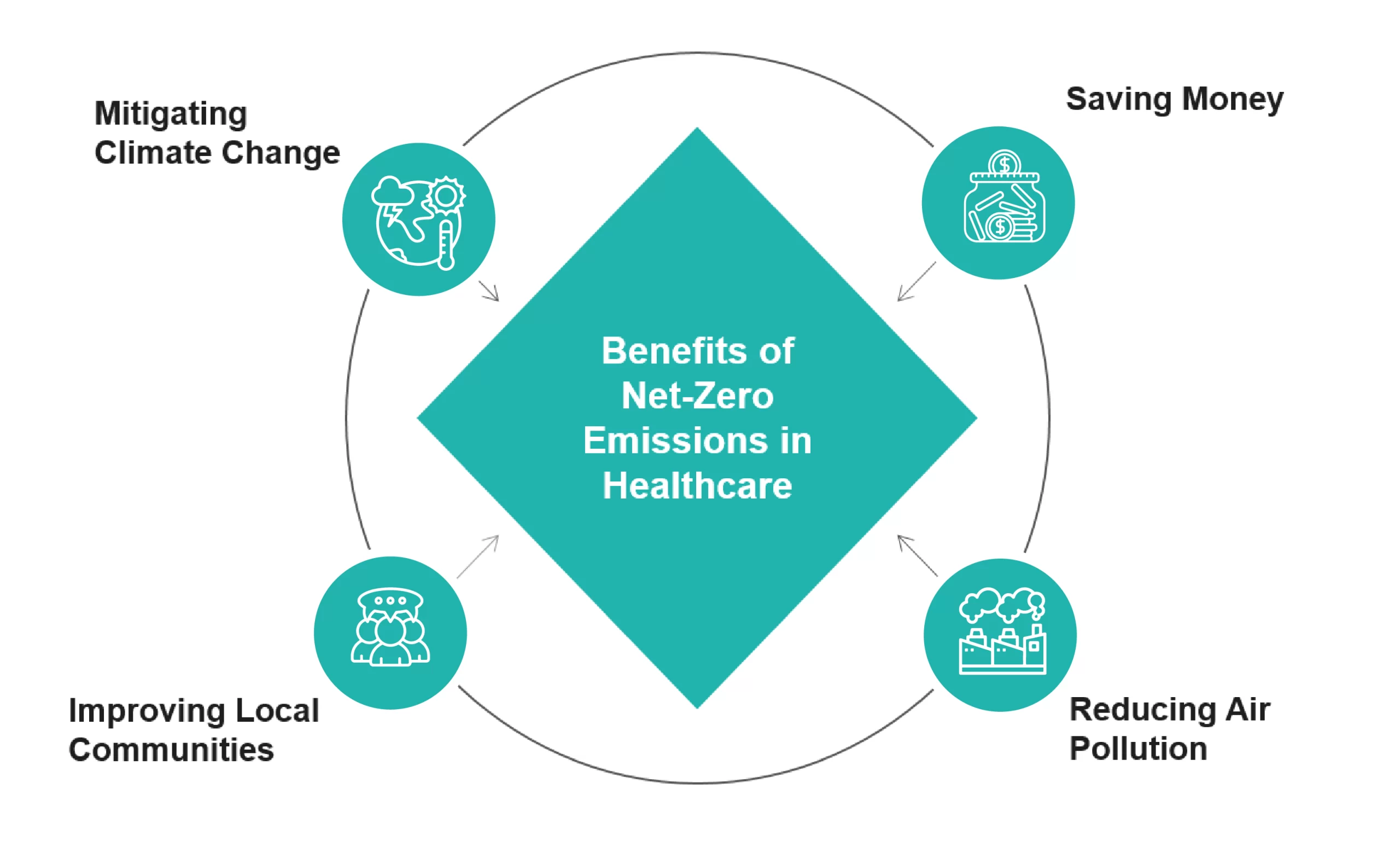
Role of Digital Technology in Sustainable Healthcare
Digital innovations encompass a variety of technologies that aid in patient care, such as wearables, remote monitoring, video consultations, electronic health records, and clinical decision support systems.
Further evidence that digital solutions can impact carbon emissions is a Net-Zero target. With digitally enabled care models, patients can potentially reduce travel and minimize physical visits to healthcare facilities. Consequently, care can be provided in the local community, where it would suit the patient best.
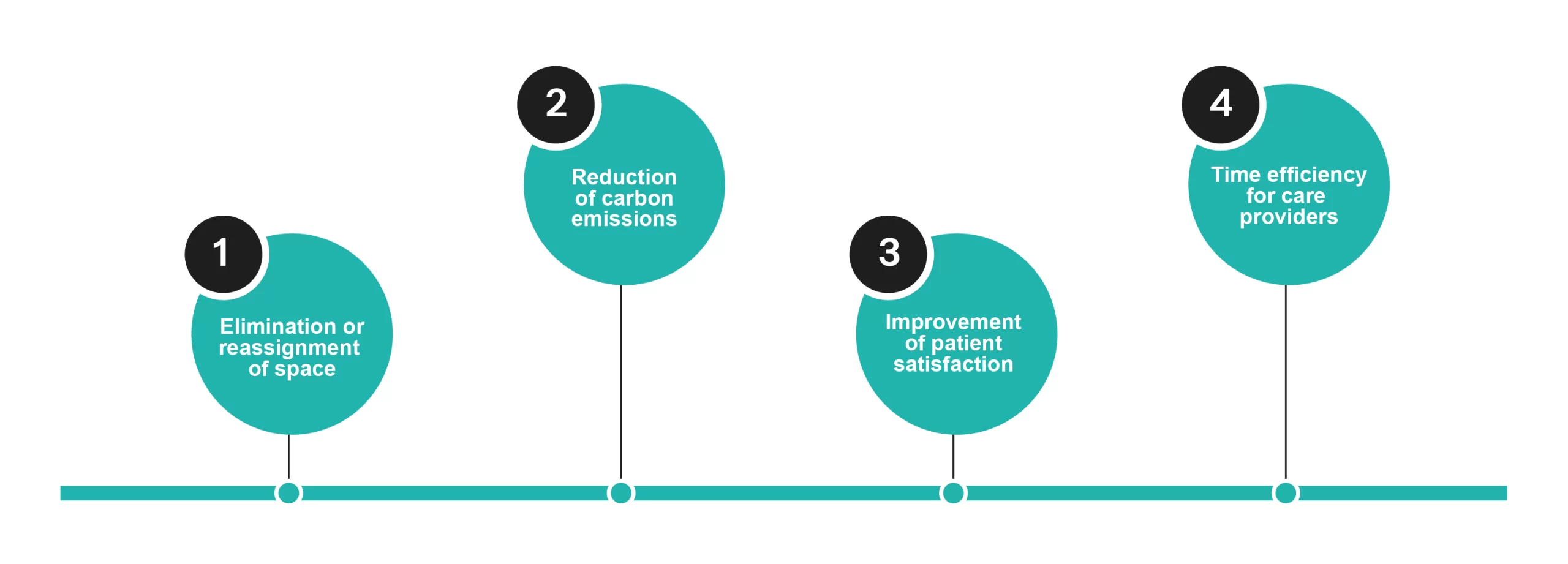
Figure 2: Some Sustainability Aids Offered By Virtual Treatment Pathways
The net-zero initiative will get additional support through:
- The electronic health and care systems, supported by digital messaging systems, enable the digitization of clinical and operational workflows as well as messaging and record types
- In-person visits for care are thus restricted to those necessary through remote consultations and monitoring
- The consideration of sustainability in the business case, approval, or even the design phase of a digital or technology project
- Supporting the purchase of technology that promotes energy efficiency and reuse at the end of life to provide sustainable options
- The use of more efficient means of communication, such as limiting emails sent, attachments, and recipients
- The assessment of the use of remote, digital, or telehealth interventions as to their sustainability in environmental terms, along with the change in access and patient experience
- It is also essential to undertake the process of digitization in the most carbon-responsible manner by hosting the data on a cloud server that has shared file access so that users do not create duplicate records
Key Innovations and Challenges in Digital Technology
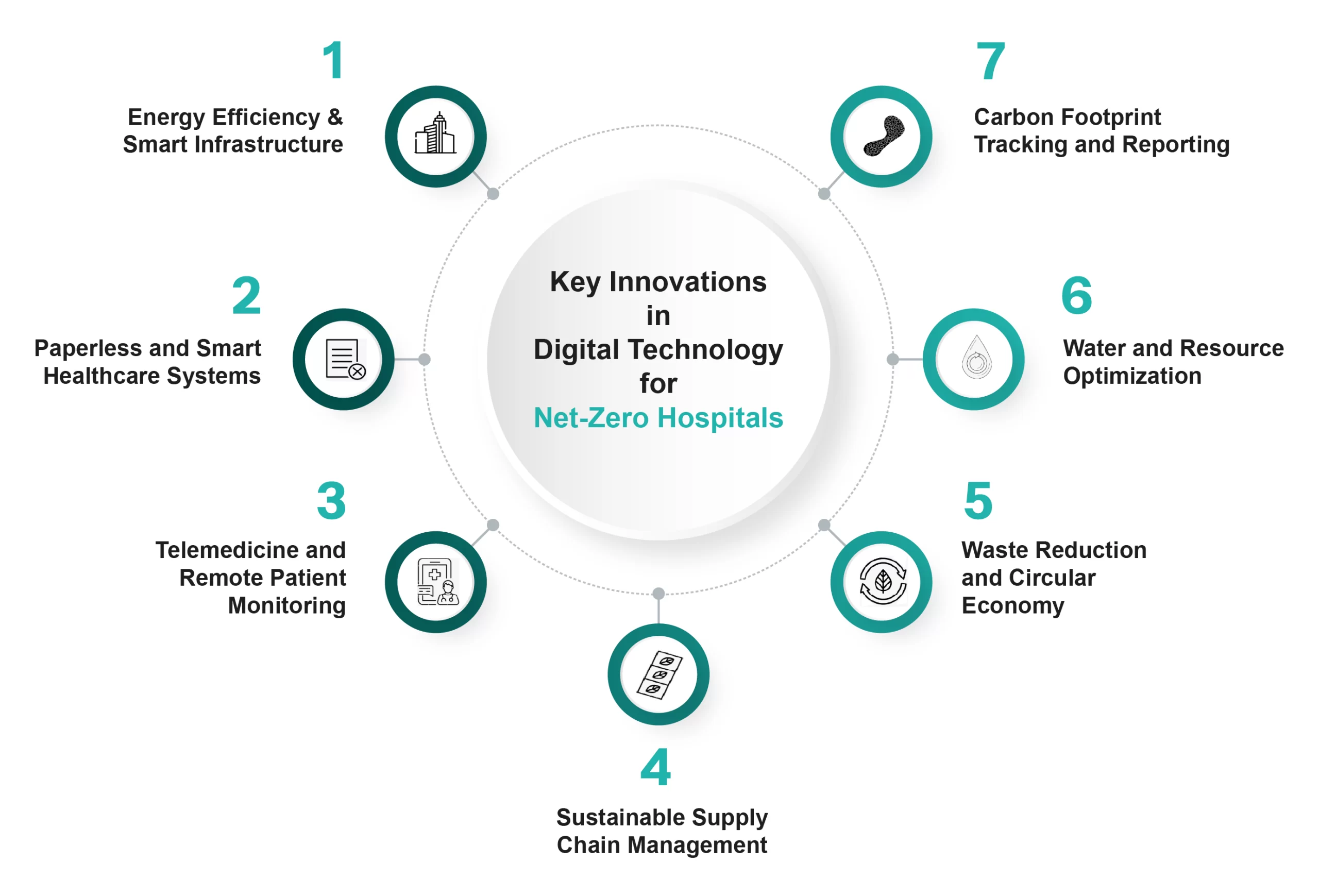
- Energy Efficiency & Smart Infrastructure
- AI-enforced automation in smart HVAC and lighting systems regulates energy utilization so that wastage can be reduced
- Internet of Things (IoT) sensors are used in building management systems to keep an eye on energy consumption, perfectly balancing efficiency
- Digitization DRIVE SMA is the perfect complement so that interconnections are seamless, and thus, solar wind or others are incorporated properly
- Paperless and Smart Healthcare Systems
- EHR eradicates paperwork, which in turn means less paper and thus prevents deforestation as well as professionalism with zero medical waste
- Digital prescriptions and billing — less paper required, more efficient
- Telemedicine and Remote Patient Monitoring
- Virtual clinics reduce patient and staff travel, reducing hospital’s carbon footprint
- Wearable devices and IoT-based continuous real-time patient monitoring reduce avoidable hospital admissions, improving resource utilization
- Virtual clinics reduce patient and staff travel, reducing hospital’s carbon footprint
- Sustainable Supply Chain Management
- AI and blockchain can track eco-friendly materials as well, which again reduces waste in medical supplies through procurement
- Predictive analytics help maintain optimum inventory levels, leading to a reduction of overstocking and wastage
- Waste Reduction and Circular Economy
- AI-driven waste segregation facilitates the automation of recycled activities and thereby results in better overall medical as well as non-medical waste management
- 3D Printing decreases the need for large-scale manufacturing and transport, thereby reducing emissions
- Water and Resource Optimization
- IoT-enabled water management helps in monitoring water consumption, thereby saving the misuse
- Before real-world implementations, digital twin technology simulates hospital operations to improve the use of resources
- Carbon Footprint Tracking and Reporting
- AI and big data analytics with real-time hospital emissions tracking to inform sustainability decisions
- Adherence to regulations meets green building standards, e.g., LEED and BREEAM; this is mandatory for hospitals that your practice will be working with
Some key solutions for Net-Zero Hospitals, bifurcated into upstream, downstream, and environmentally responsible production are mentioned below:
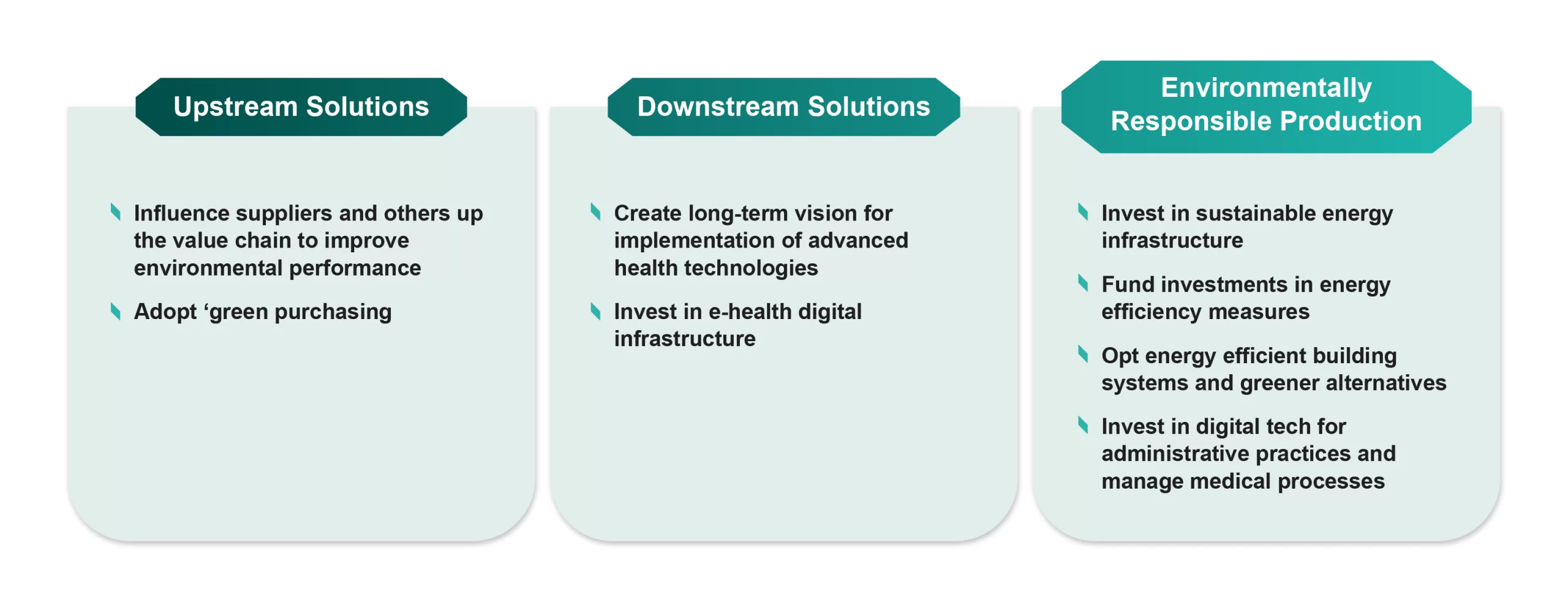
Figure 3: Key Solutions for Net-Zero Hospitals
Major challenges that Digital technology has to overcome to attain Net-Zero Hospitals include, but are not limited to:
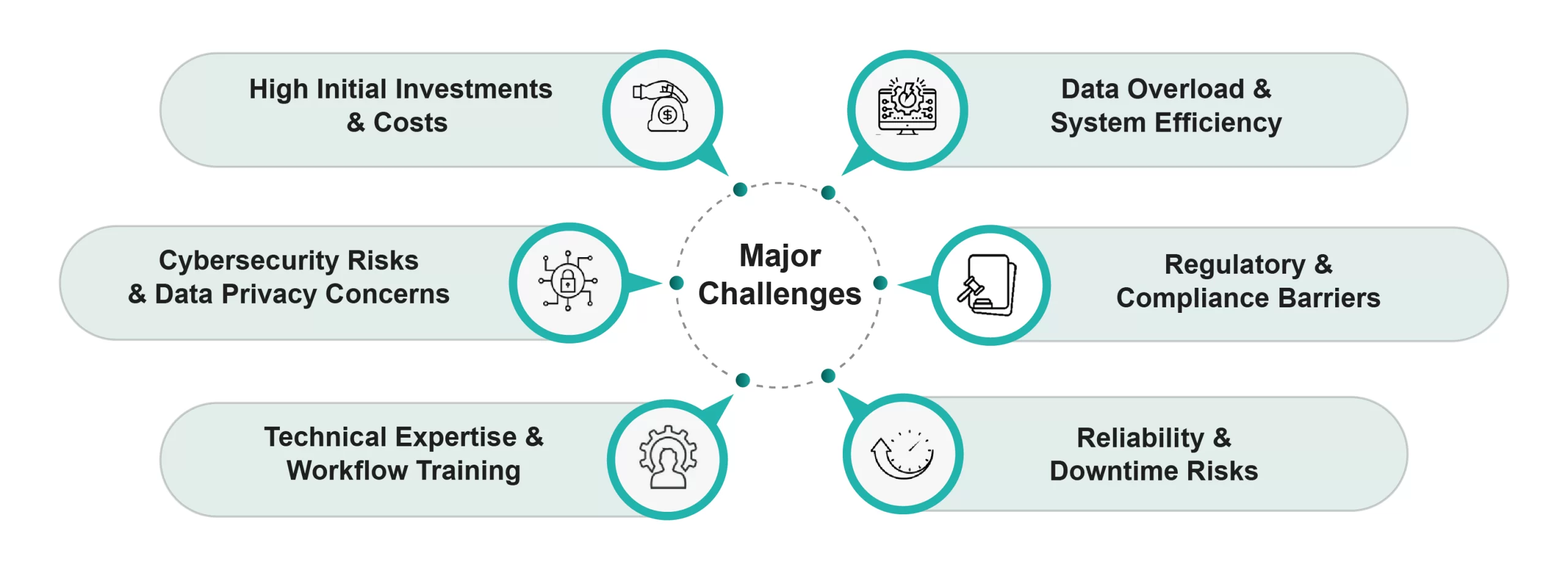
Figure 4: Major Challenges in Digital Technology for Net-Zero Hospitals
Examples of Fostering Transitions in Healthcare
The Global Green and Healthy Hospitals, a network of health organizations aiming to reduce their environmental footprint, has over 1,600 members in 78 countries. Various countries are launching their programs helping towards zero emissions:
- KLIK Green Project: This project empowers 250 German hospitals and rehabilitation clinics to support climate protection. The target is to reduce 100,000 tons of CO2 equivalents in three years by comprehensively and sustainably lowering the usage of energy, materials, and resources.
- YewMaker: Sustainable Medicines Partnership, initiated by YewMake,r is a not-for-profit action collaborative of 48 organizations to minimize waste of medicines and from medicines
- Ten23health: This firm assists the pharmaceutical sector and biotech companies in creating sustainable approaches to developing and producing medicines
- Oriel Eye Care Centre: This initiative combines intelligent technology in healthcare to benefit both the patient and the environment. Oriel has real-time location systems (RTLS) for patient and asset tracking and intelligent digital technology systems to deliver correct information at the right time.
- Humber River Hospital: This is North America’s first fully digital hospital and one of Canada’s largest acute care facilities. Digital integration of design is evident throughout in hospital-smart bed technology, robotics for certain surgeries, digital laboratory processing, automated guided medical supply delivery vehicles, and bedside computer monitors that let patients adjust their surroundings.
- Vanderbilt University Medical Center (VUMC): The building systems are controlled by intelligent systems that regulate heating, cooling, and lighting according to occupancy and time of day. Their recycling program has kept over 30 percent of waste out of landfills. VUMC gives away unused medical supplies, reducing waste while contributing to the health of surrounding communities with assistance from local organizations.
- Sheba Medical Center: Israel’s largest hospital is spearheading digital health initiatives to mitigate the environmental damage related to cutting 40 percent of patients’ travel time by telemedicine technology. The smart hospital system efficiently uses resources, thereby conserving energy and improving patient care. AI diagnostics in radiology rationalize resources, and thus, this department’s energy consumption is reduced by 30 percent.
- National Health Service (NHS): By 2045, the NHS aims to be the world’s first net-zero health system. The plan includes installing solar and wind renewable energy sources in larger hospitals throughout the U.K. Electric vehicles will be increasingly used to transport patients who are not in emergencies. Low-carbon hospital building modules will reduce emissions during construction and increase energy efficiency.
- Victorian Health Building Authority (VHBA): VHBA is assisting the Victorian Government with its commitment to cutting emissions of 2.7 Mt CO2e from government operations annually by 2025, below 2018-19 levels.
- Mollet University Hospital: This is a net-zero university hospital with a smart building concept. It was specifically designed to reduce visual impact and blend into natural environments. The hospital even includes a geothermal system, but its signature is its natural courtyards and sustainable architecture.
Conclusion
Eventually, achieving a net-zero hospital through digital technologies necessitates intelligent systems with data-informed decision-making, which the seamless inclusion of sustainable infrastructure must complement. The carbon footprint can also be mitigated by employing digital tools like AI-driven energy management, IoT-facilitated monitoring, and telemedicine to provide better patient care.
Using real-time data analytics allows hospitals to create actionable strategies to adjust energy utilization, minimize waste, and optimize operational efficiency. Moreover, automation and digital workflows reduce consumption, which adds to an overall stability initiative.
Digital technology can help keep a hospital green and energy-efficient. Though net-zero hospitals may currently be niche, with innovation and investment, they stand to become mainstream, offering a bright future for patient health and the planet.

